The Laetoli Footprints have long been a subject of interest among creationists. Radiometrically dated to 3.66 million years old, they are the first indisputable evidence for bipedality in the fossil record. Creationists have sometimes used them as evidence for an early appearance of humanity. However, a closer look at the anatomy of the footprints suggests that they may not have been made by humans.
The views expressed in this article reflect those of the authors mentioned, and not necessarily those of New Creation.
Laetoli
Laetoli is a famous paleoanthropological site in north eastern Tanzania. This site is only about 25 miles from Olduvai Gorge, where many ancient human and ape fossils have been found. The footprints for which Laetoli is famous are imprinted in thick layers of hardened volcanic ash (known as tuff). The source of this ash is still unknown although some researchers have suggested that it may be attributable to the eruption of either Mt. Essimingor or Mt. Mosonik.1 The thick layers of ash point to successive volcanic eruptions which blanketed the landscape.
The Fauna of Laetoli
Laetoli was once home to a variety of now extinct animals. The ash layers contain not only bones, but also footprints of the animals which once inhabited the area. Small horses like Hipparion grazed the ancient grasslands while saber-tooth cats such as Homotherium prowled the region. Giant herbivores like Ancylotherium, an oddly proportioned mammal, browsed from the trees. Short-necked relatives of modern giraffes like Sivatherium boasted large antler-shaped structures on their heads. Other animals preserved at Laetoli such as ostriches, hyenas, and dik-diks still inhabit the area today.2
In the 1970’s, scientists began finding fossils of an extinct species of ape at Laetoli. Isolated teeth made up most of the collection although pieces of the skull and lower jaw also came to light.3 They also recovered the bones of LH 21, a fragmentary partial skeleton which preserves some of the dentition, lower arm, finger bones, ribs, and thigh bone of a juvenile individual. Although the specimens discovered at Laetoli were quite incomplete, they bear similarities to fossils discovered around the same time at a site in Ethiopia called Hadar. They are now categorized in the same species, Australopithecus afarensis.
Australopithecines are an extinct genus of apes who lived exclusively in Africa. The most famous australopithecus skeleton is “Lucy”. Since her discovery, an even more complete skeleton nicknamed “Little Foot” has come to light. Careful study of these creatures’ bones shows that they were bipeds. Although humans and australopithecines both walked upright, and shared many features, they are different enough to belong in separate created kinds.
The Discovery of Hominin Footprints at Laetoli
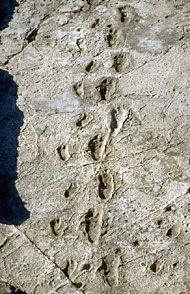
The Site G footprint trails
In 1976, two years before the discovery of the most famous trackway at Laetoli, Philip Leakey and a colleague found an unusual set of footprints. The short trackway at Site A consists of five oddly shaped prints. Mary Leakey, Philip’s mother, thought that the footprints might have been left behind by hominins. Other researchers, however, suggested that bears might have made the tracks by walking on their hind limbs. The finding was soon eclipsed by the discovery of Site G, which provided unequivocal evidence of bipedal hominins. Only forty-three years later would scientists return to Site A and discover its importance.4
Mary Leakey and Paul Abell found Site G in 1978. This site preserved a twenty-seven-meter-long trackway consisting of fifty-four footprints probably made by three individuals.5 The prints looked quite similar to those made by modern people. However, the footprints at Site G are smaller than the average human footprint. The tracks range from about 7 to 8½ inches in length.6 If the creature who made the footprints went shoe shopping today, they’d probably fit best in a US women’s size 4 or 5.
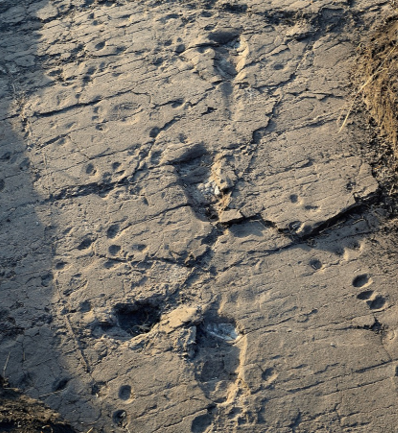
Excavations in 2015 uncovered an additional footprint trail only about 500 feet away from Site G. Dubbed Site S, it consists of 14 footprints from 2 individuals.7 Interestingly, the tracks at Site S are larger than those at Site G. The footprints of the smaller individual are about 9 inches long; it would fit in a US women’s size 6. The larger individual’s footprints are a little more than 10 inches in length, meaning that it would get a women’s size 10.8
The Return to Site A
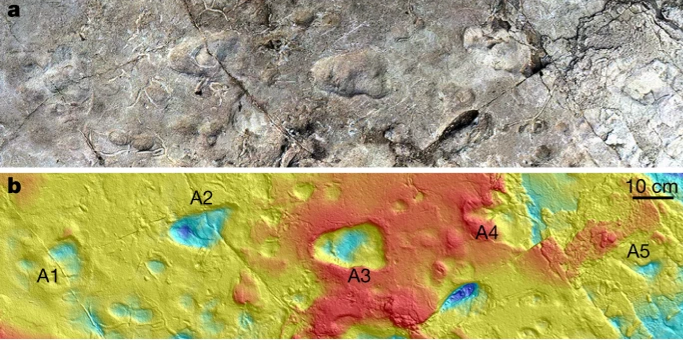
Scientists finally returned to Site A in 2019 to excavate and clean the tracks first discovered in ‘76. Their analysis concluded that a bear could not have made the footprints. They noted no evidence of claw marks, a commonality in bear prints, and the proportions did not match those of a bear.
In addition, the tracks show that the creature walked by putting one foot over and in front of the other in an action called cross-stepping. Cross-stepping is usually a natural response to some kind of upset to prevent a creature from slipping and falling. We have never observed this behavior in upright walking bears or even chimpanzees. It seems that these animals’ pattern of weight distribution may prevent them from walking in this way. The largest footprints at Site A were quite small, only about 6 ½ inches long, or a US kid’s shoe size 10.5. Interestingly, the footprints at Site A are also quite differently proportioned than those at Site G or S.9
Paleoanthropologists Disagree About Who Made the Laetoli Footprints
Putting a face on the footprints wasn’t so easy though. Scientists disagreed about who could have made them. Dr. Russell Tuttle, a paleoanthropologist at the University of Chicago, argued that the prints showed a morphology which was too human-like to be attributed to any of the known australopithecine species.10 Meanwhile, Dr. Tim White, a paleoanthropologist at the University of California Berkeley, concluded that Australopithecus afarensis was the best candidate.11 Not only did the foot anatomy match, but bones of this species had been discovered right at Laetoli dating back to the same time period as the footprints.
Did Australopithecines have a Divergent Hallux?
The Laetoli Footprints show that the creature who made them had an adducted hallux; its big toe was straight in line with its other digits. We humans also have an adducted hallux; as a result it is very difficult for us to grab objects with our feet. However, measurements of the degree of hallucal abduction in the Laetoli prints show that the big toe stuck out more than in a typical modern human foot. Arboreal (tree-climbing) apes have a divergent hallux; their big toe sticks out to the side of their foot. This feature allows chimpanzees to grasp branches with their feet. The few known australopithecine foot bones suggest that they did not have a chimp-like divergent hallux.
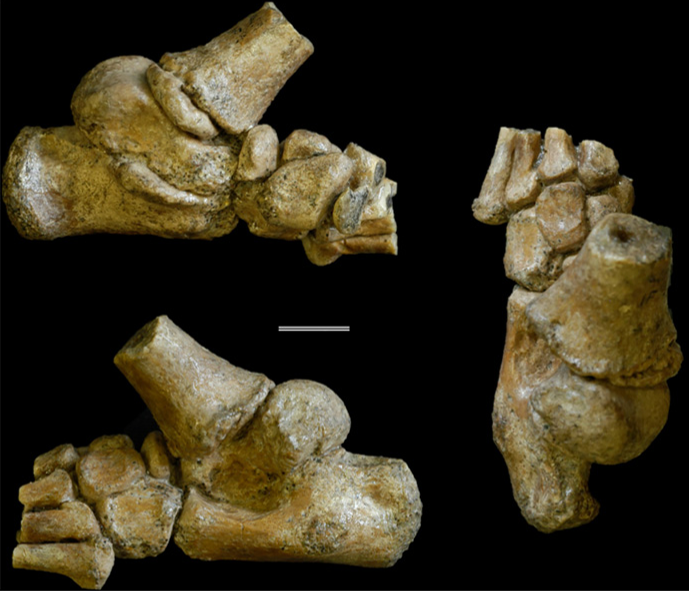
A juvenile Australopithecus afarensis skeleton from Dikika, Ethiopia preserves a beautiful rear and mid-foot. The skeleton is nicknamed “Selam” and is believed to have come from a female individual about three years old. Study of the medial cuneiform, the bone on which the big toe hinges, shows that the curvature and angle of the joint surface is intermediate between chimpanzees and humans. This suggests that the mobility of the big toe was also intermediate.12
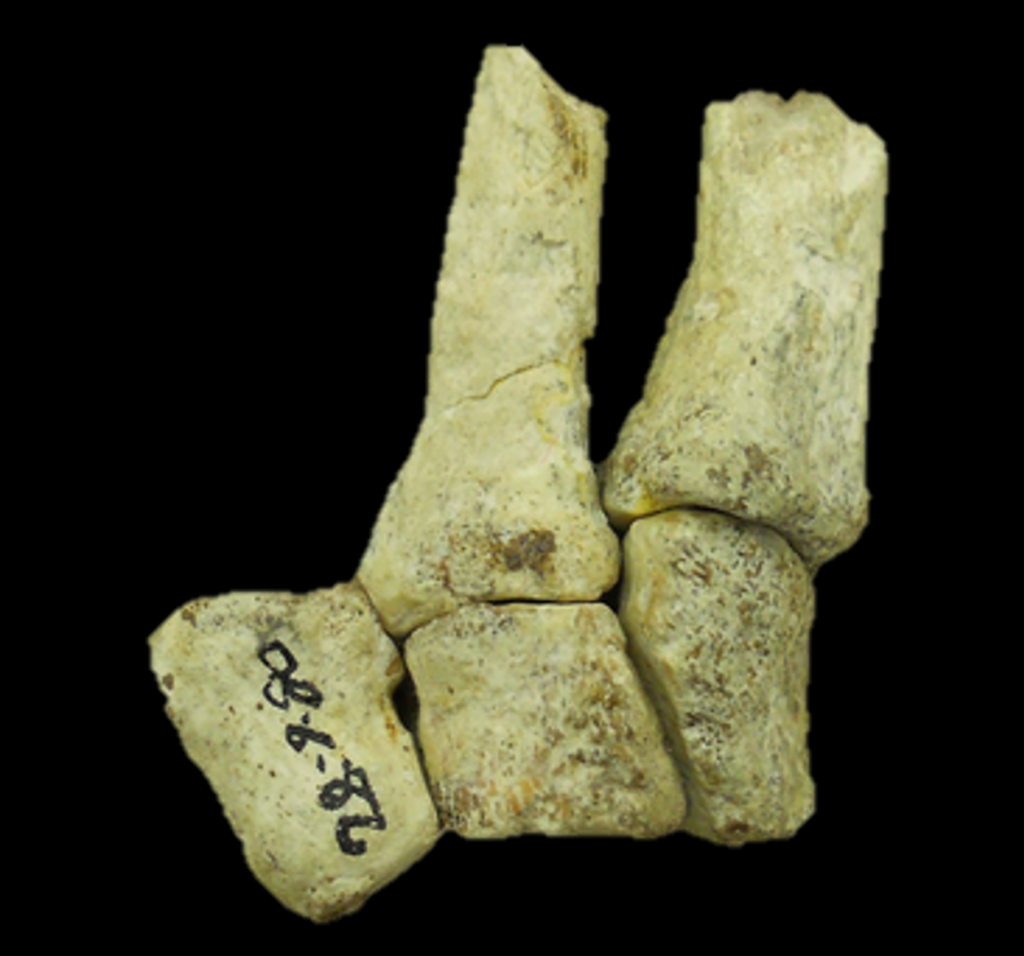
The nearly complete skeleton of “Little Foot” from the Sterkfontein Cave System of South Africa preserves another Australopithecine foot. Although this individual was not of the species Australopithecus afarensis, it was probably closely related. Originally, anthropologists interpreted this foot as having a divergent hallux. However, the subsequent discovery of more foot bones unequivocally showed that Little Foot had an adducted hallux like humans.13
Flat Footed Prints?
The Laetoli Footprints at Sites G and S have traditionally been interpreted as having been made by a creature with an arched foot. However, a recent study calls this claim into question. This new research suggests that the apparent arch in the footprints may not be indicative of an arched foot. When we walk, our heel hits the ground first, making a deep impression. Then, we push off from the ground with our toes, once again leaving a mark. This behavior results in a footprint which looks arched. The front and back of the print are deeper than the middle. The study found that even people with a minimal arch can produce very arched footprints because of the way they walk.14 Altogether then, this work demonstrates that the creature who made the Laetoli Footprints did not necessarily have a well-developed arch.
Chimpanzees do not have an arched foot; as a result their feet are quite flexible. In fact, chimpanzees can lift their heel off the ground without lifting the rest of their foot due to their midtarsal break. This feature is a flexible point between the tarsals of the rear foot and the metatarsals of the midfoot. We can tie this anatomy to arboreal locomotion, having a flexible foot useful for grasping and climbing.
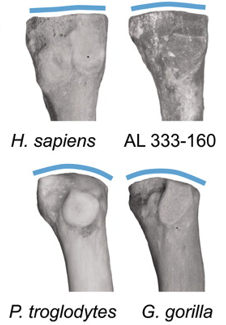
Whether or not australopithecines had an arched foot or a midtarsal break has long been a subject of debate. One of the most important specimens is A.L. 333-160, a fourth metatarsal of Australopithecus afarensis from Hadar, Ethiopia. Study of this bone indicates that it did not have the rounded joint surface which makes the foot flexible; instead it had a flat joint indicating little flexibility.15 Selam’s foot skeleton corroborates this conclusion. The cuboid bone of this individual is elongated compared to those of chimpanzees. The positioning and angling of the cuboid is similar to that seen in humans, and does not support the presence of a midtarsal break. However, the Dikika foot does not seem to have had a well developed arch.16
Morphometric Studies
Studies of footprint shape have repeatedly found significant differences between the Laetoli Footprints and those of modern people. For example, a 2006 study of the two dimensional shape of the Site G footprints found them to be quite distinct. Based on both shape and size they fell outside the human sample. However, the authors noted that the footprints were more similar to human footprints than chimpanzee’s.17
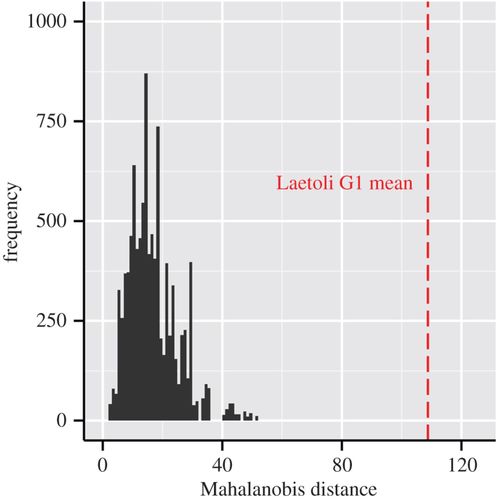
Another study, in 2016, compared the three dimensional shape of the Site G prints to 245 footprints made by habitually unshod modern people. They found that the Site G footprints were far outside of the human distribution they sampled. In fact, they calculated that the probability of human footprints falling so far outside of the typical distribution was 0. Interestingly, the Site G footprints fell between the human and chimpanzee samples.18
Following that, a dissertation released in 2017 which looked at foot length, width, stride length and other factors reached similar conclusions. The Site G tracks fell outside 95% of the human distribution. The Site S tracks, on the other hand, had significant overlap with the human sample. However, some of them fell outside 95% of the human distribution as well.19 Overall, morphometric studies of the Laetoli Footprints corroborate the conclusion that they were not made by anatomically modern people.
The proportions of the footprints at Site A suggest a foot morphology significantly different from either humans or known australopithecines. However, the footprint shape is more similar to australopithecines than any other creatures, so they may have been made by an unknown bipedal ape.20
Humans Probably Did Not Make the Laetoli Footprints
Attributing the Laetoli Footprints to humans is problematic for multiple reasons. Firstly, we have never found human bones of comparable age. The oldest fossil we can reliably attribute to the genus Homo is UR 501 from Uraha, Malawi. This specimen is radiometrically dated to 2.4 million years old. Although radiometric dates are incorrect in an absolute sense, they do give a relative sense of time. The Laetoli Footprints are dated to 3.66 million years old. Consequently, even in a relative sense, there is significant temporal discontinuity between the Laetoli Footprints and the first appearance of humans in the fossil record.
As young-earth creationists we believe that humans long predate their first appearance in the fossil record. However, there is still no reason to believe that humans had yet inhabited Laetoli at this time. Human fossils have been found at Laetoli, but only in layers deposited long after the footprints.
It must be noted that absence of human fossils does not prove that humans were not at Laetoli when the footprints were made. However, since australopithecine fossils appear in the fossil record at the appropriate time and place with suitable morphology, there does not seem to be reason to invoke a ghost population of humans at the site. Occam’s Razor suggests that the simplest explanation is usually the best. Arguing for a human source of the Laetoli Footprints relies upon significant unproven assumptions. The size variation between the footprints is expected given what we know about sexual dimorphism in Australopithecus afarensis. In addition, the weight distribution patterns, and possibly mobile hallux fit well within our understanding of australopithecine morphology, but are not well explained when assuming a human origin.
Conclusion
In short, the roughly human-like morphology of the Laetoli Footprints is not sufficient evidence to attribute them to humans given what we now know about australopithecine anatomy and locomotion. Morphometric studies of footprint shape evidently contradict the claim that they were made by Homo sapiens. Although uncertainty remains, the temporal and geographic distribution of Australopithecus afarensis make it the most likely candidate given the present evidence.
Footnotes
- Zaitsev et al. 2019. Stratigraphy, mineralogy and geochemistry of the Upper Laetolil Tuffs including a new Tuff 7 site with footprints of Australopithecus afarensis, Laetoli, Tanzania. Journal of African Earth Sciences, Volume 158, 103561. DOI: https://doi.org/10.1016/j.jafrearsci.2019.103561 ↩︎
- Leakey et al. 2019. Fossil hominids from the Laetolil Beds. Nature, Volume 262, 460-466. DOI: https://doi.org/10.1038/262460a0 ↩︎
- Leakey, 2019, 460-466. (Footnote 2) ↩︎
- McNutt et al. 2021. Footprint evidence of early hominin locomotor diversity at Laetoli, Tanzania. Nature, Volume 600, pgs. 468-471. DOI: https://doi.org/10.1038/s41586-021-04187-7 ↩︎
- Leakey, M., Hay, R. 1979. Pliocene footprints in the Laetolil Beds at Laetoli, northern Tanzania. Nature, 278, 317-323. DOI: https://doi.org/10.1017/S0003598X00071969
↩︎ - Pelissero, Alex. 2017. A Comparative Analysis of Newly Discovered Pliocene Hominin Footprints from Laetoli, Tanzania. Colorado State University. https://www.researchgate.net/publication/317350596_A_Comparative_Analysis_of_Newly_Discovered_Pliocene_Hominin_Footprints_from_Laetoli_Tanzania ↩︎
- Masao et al. 2016. New footprints from Laetoli (Tanzania) provide evidence for marked body size variation in early hominins. eLife, 5:e19568. DOI: https://doi.org/10.7554/eLife.19568 ↩︎
- Pelissero, 2017. (Footnote 6) ↩︎
- McNutt et al. 2021. Footprint evidence of early hominin locomotor diversity at Laetoli, Tanzania. Nature, Volume 600, pgs. 468-471. DOI: https://doi.org/10.1038/s41586-021-04187-7 ↩︎
- Tuttle et al. 1991. Laetoli toes and Australopithecus afarensis. Human Evolution, 6, 193-200. DOI: https://doi.org/10.1007/BF02438142 ↩︎
- White, T., Suwa, G. 1987. Hominid footprints at laetoli: Facts and interpretations. American Journal of Physical Anthropology, 72, 485-514. DOI: https://doi.org/10.1002/ajpa.1330720409 ↩︎
- DeSilva et al. 2018. A nearly complete foot from Dikika, Ethiopia and its implications for the ontogeny and function of Australopithecus afarensis. Science Advances, Volume 4, Issue 7. DOI: https://doi.org/10.1126/sciadv.aar7723 ↩︎
- DeSilva et al. 2018. One small step: A review of Plio-Pleistocene hominin foot evolution. American Journal of Physical Anthropology, 168:S67, 63-140. DOI: https://doi.org/10.1002/ajpa.23750 ↩︎
- Hatala et al. 2023. Arched footprints preserve the motions of fossil hominin feet. Nature Ecology and Evolution, 7, 32-41. DOI: https://doi.org/10.1038/s41559-022-01929-2 ↩︎
- Ward et al. 2011. Complete Fourth Metatarsal and Arches in the Foot of Australopithecus afarensis. Science, Volume 331, Issue 6018, pgs. 750-753. DOI: https://doi.org/10.1126/science.1201463 ↩︎
- DeSilva et al. 2018. (Footnote 12) ↩︎
- Berge et al. 2006. New interpretation of Laetoli footprints using an experimental approach and Procrustes analysis: Preliminary results. Science Direct, Volume 5, Issues 3-4, pgs. 561-569. DOI: https://doi.org/10.1016/j.crpv.2005.09.001 ↩︎
- Hatala et al. 2016. (Footnote 14) ↩︎
- Pelissero, 2017. (Footnote 6) ↩︎
- McNutt et al. 2021, 468-471. (Footnote 4) ↩︎


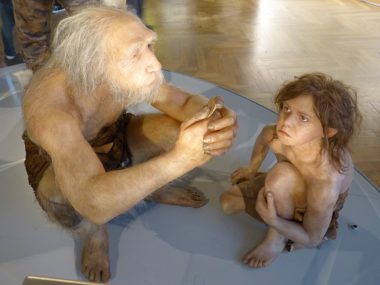
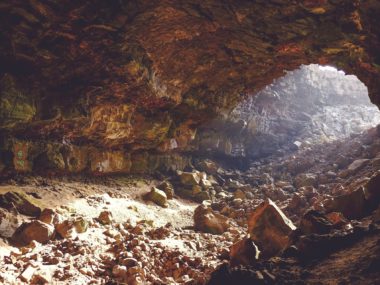
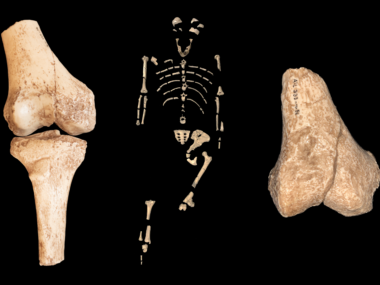

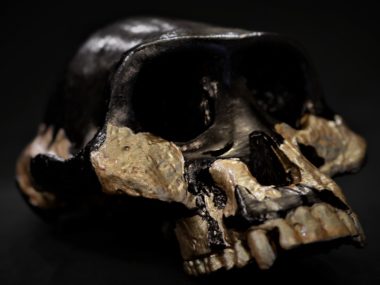





Peter,
good job on your analysis. It has depth of research and careful reasoning.
Here is a good summary quoting those who made detailed analysis:
https://blog.drwile.com/those-nasty-footprints-are-still-causing-problems/